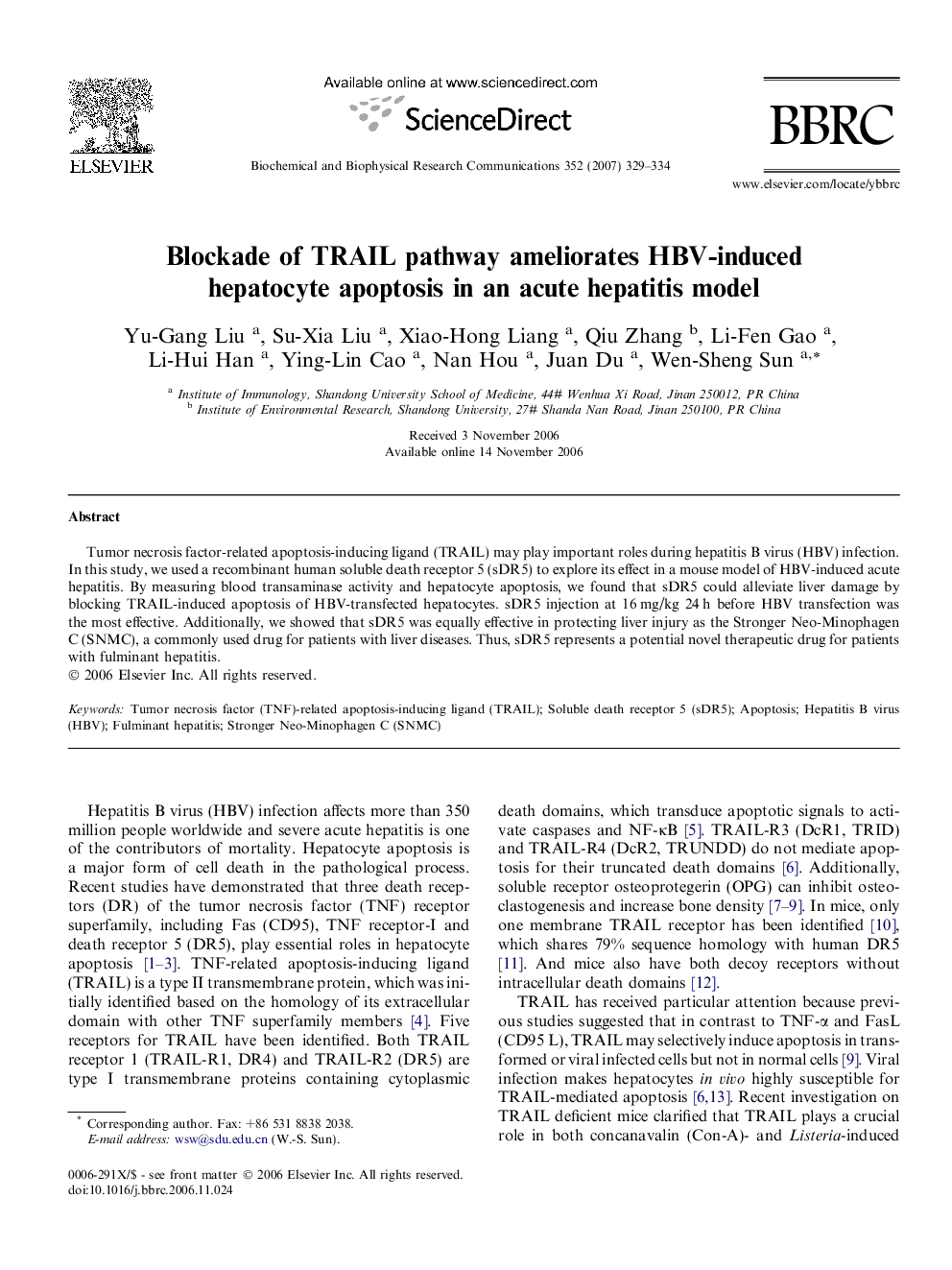| Article ID | Journal | Published Year | Pages | File Type |
|---|---|---|---|---|
| 10767559 | Biochemical and Biophysical Research Communications | 2007 | 6 Pages |
Abstract
Tumor necrosis factor-related apoptosis-inducing ligand (TRAIL) may play important roles during hepatitis B virus (HBV) infection. In this study, we used a recombinant human soluble death receptor 5 (sDR5) to explore its effect in a mouse model of HBV-induced acute hepatitis. By measuring blood transaminase activity and hepatocyte apoptosis, we found that sDR5 could alleviate liver damage by blocking TRAIL-induced apoptosis of HBV-transfected hepatocytes. sDR5 injection at 16Â mg/kg 24Â h before HBV transfection was the most effective. Additionally, we showed that sDR5 was equally effective in protecting liver injury as the Stronger Neo-Minophagen C (SNMC), a commonly used drug for patients with liver diseases. Thus, sDR5 represents a potential novel therapeutic drug for patients with fulminant hepatitis.
Keywords
Related Topics
Life Sciences
Biochemistry, Genetics and Molecular Biology
Biochemistry
Authors
Yu-Gang Liu, Su-Xia Liu, Xiao-Hong Liang, Qiu Zhang, Li-Fen Gao, Li-Hui Han, Ying-Lin Cao, Nan Hou, Juan Du, Wen-Sheng Sun,
